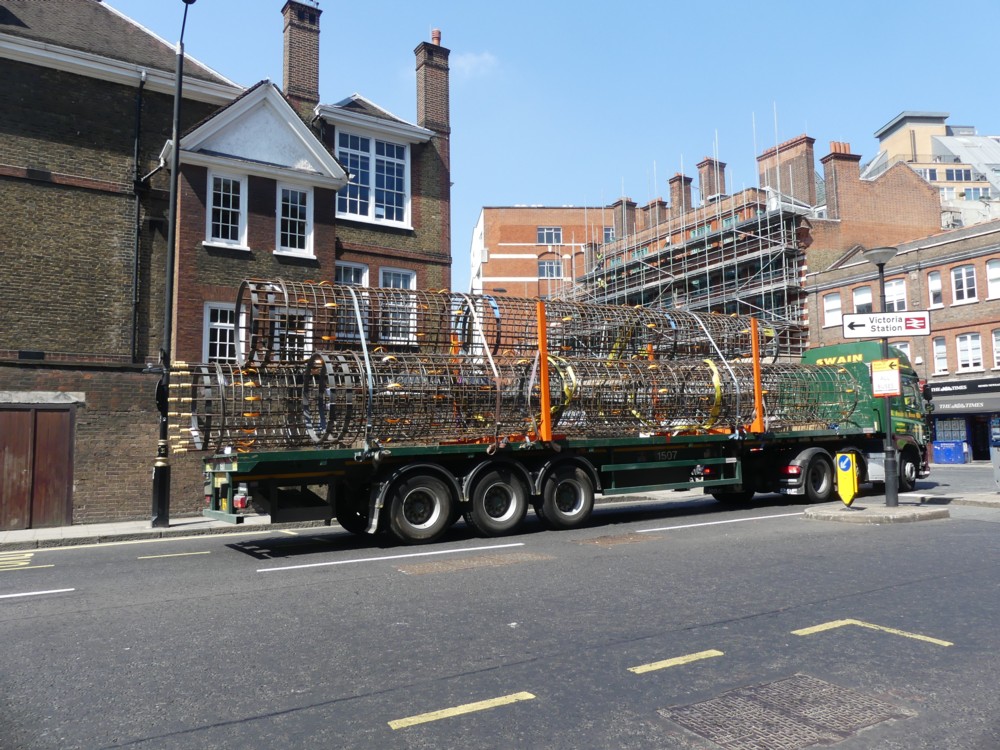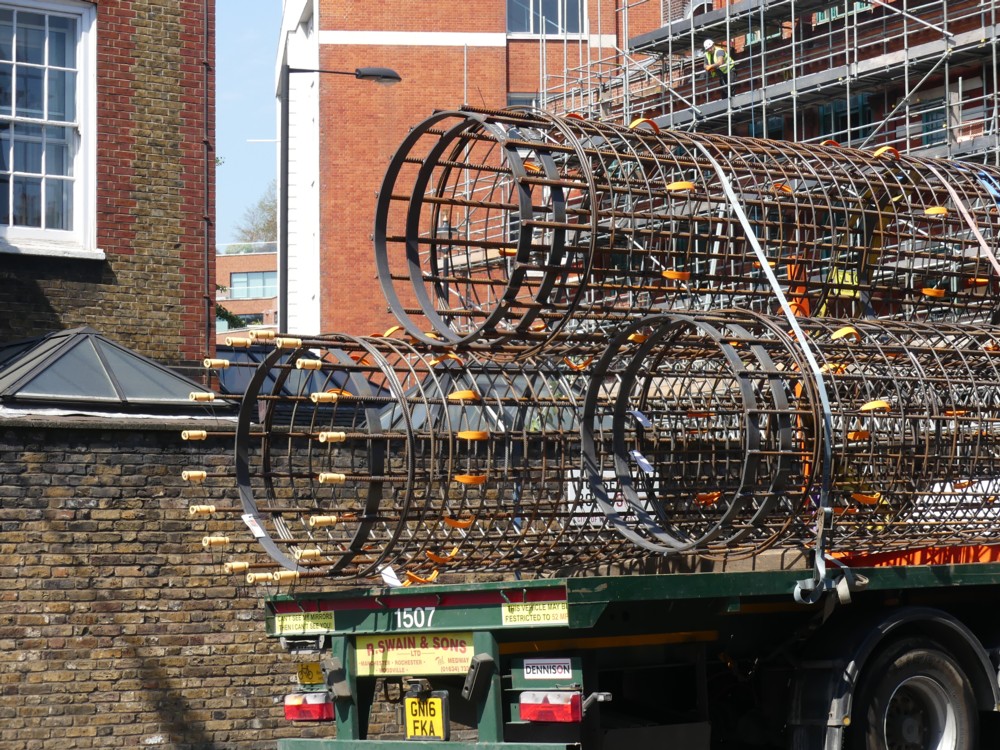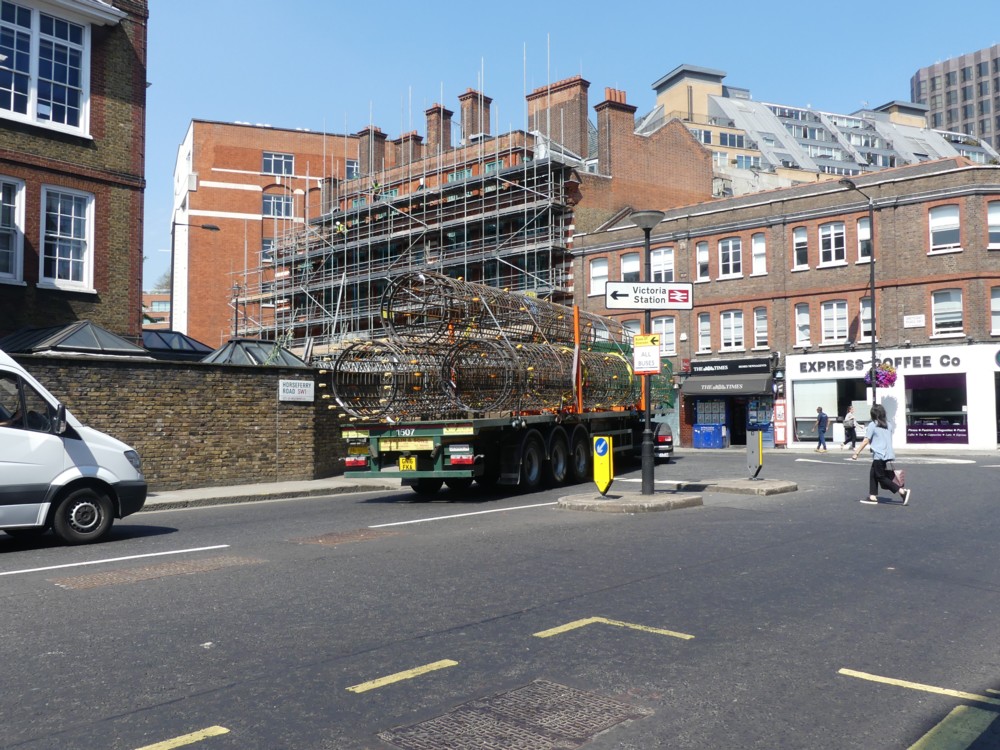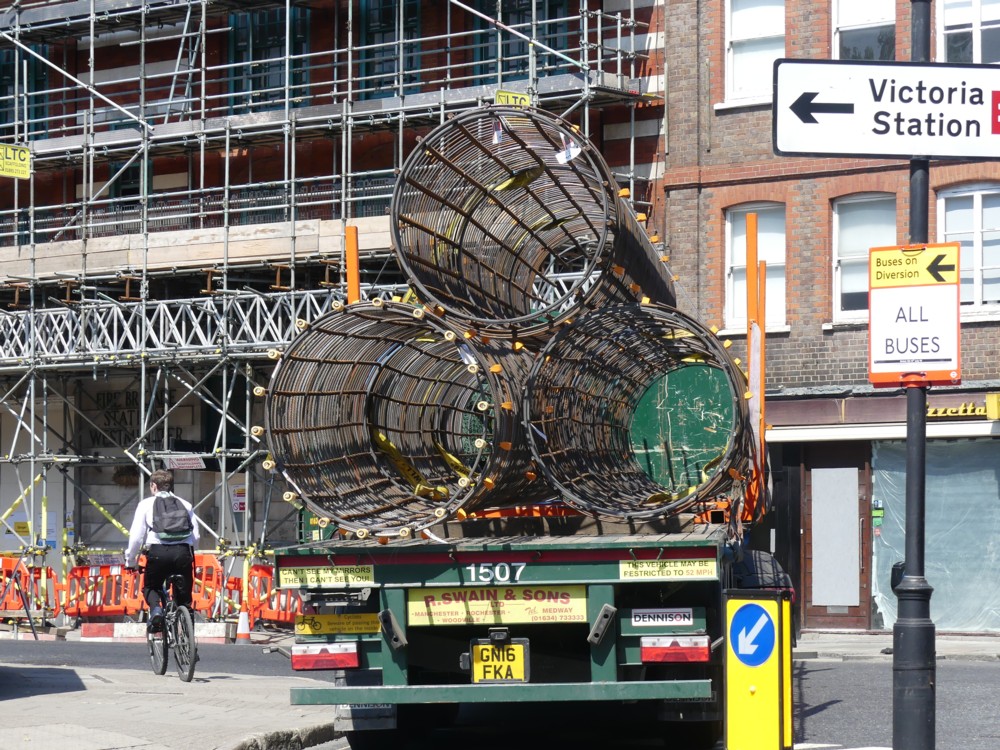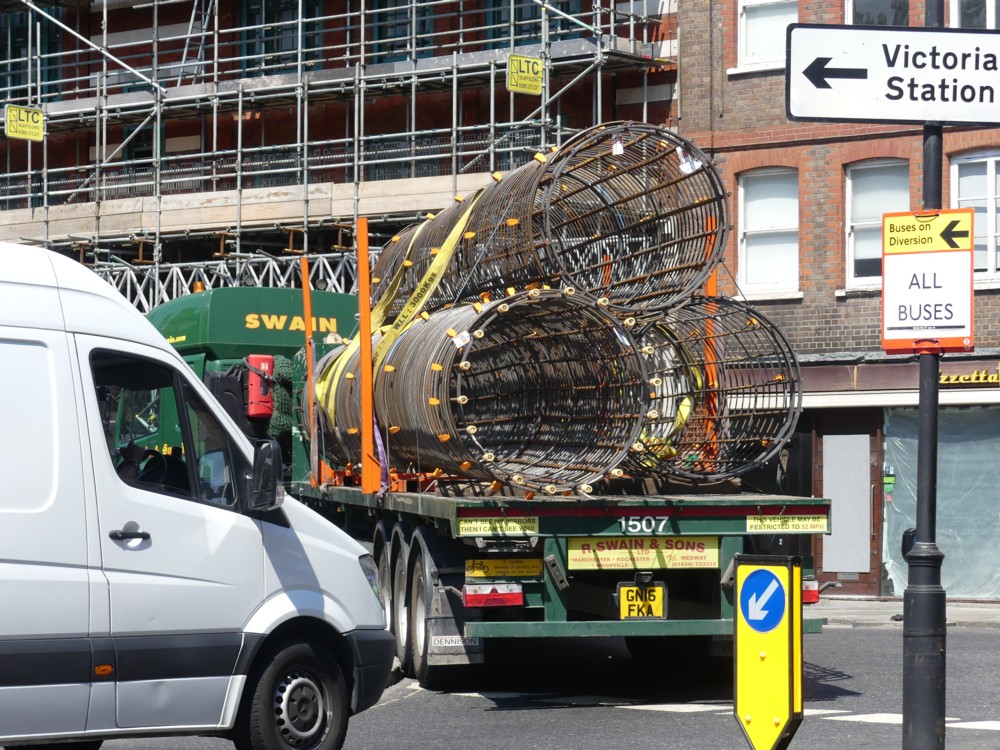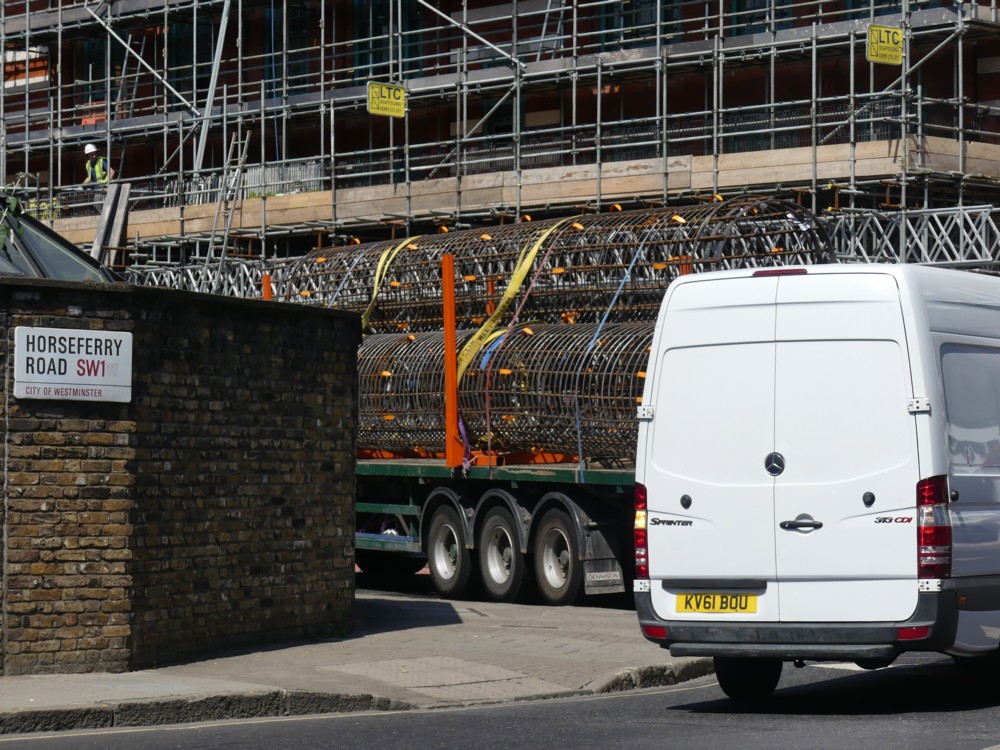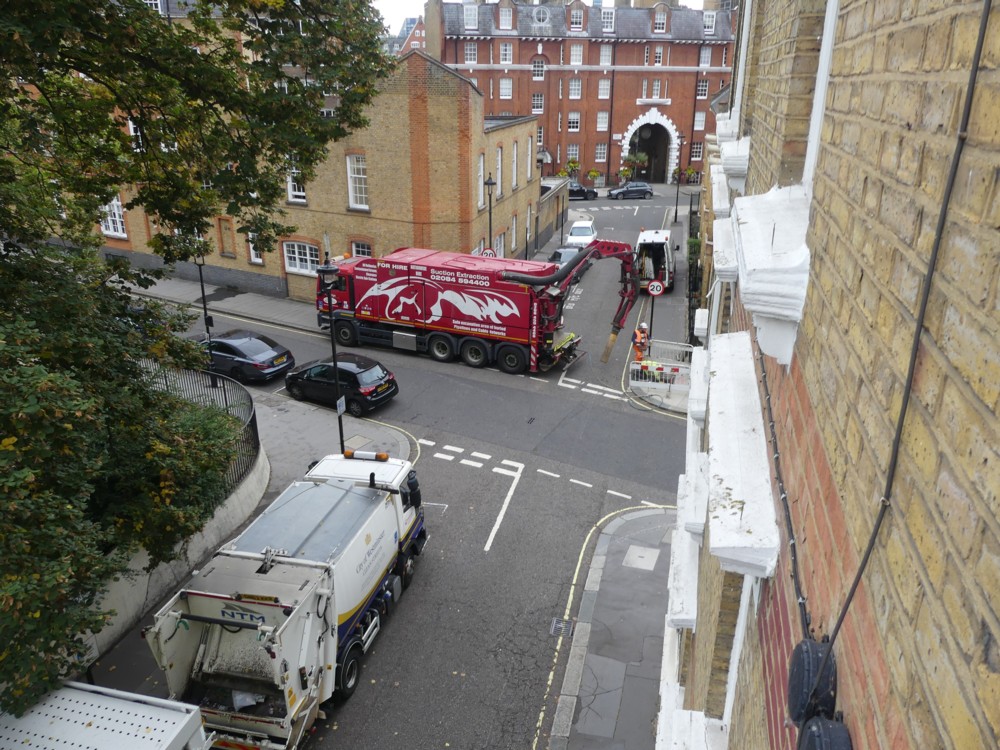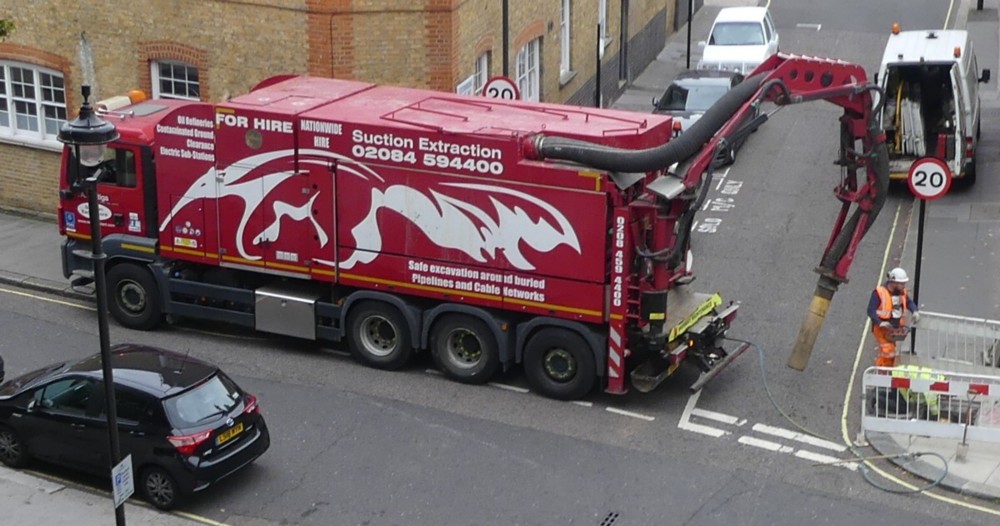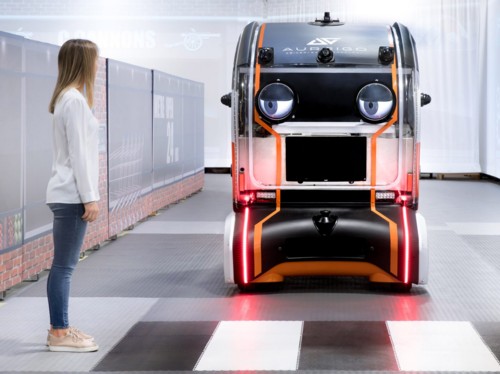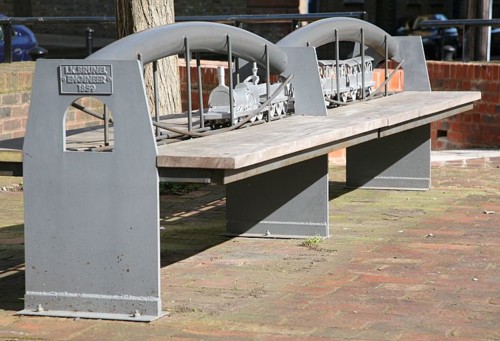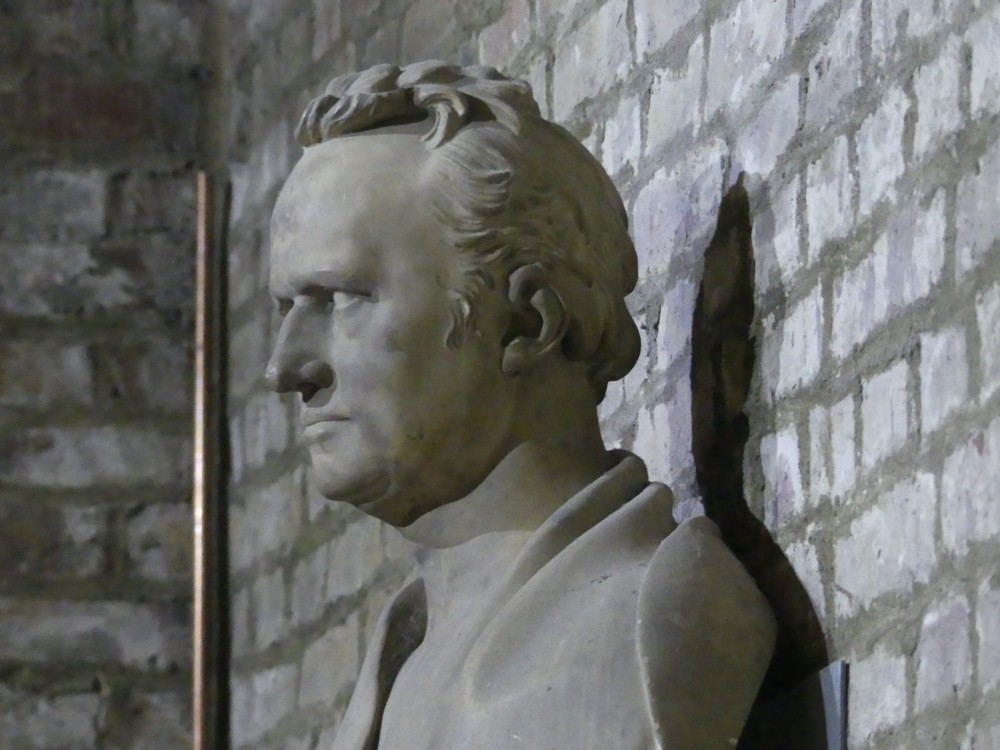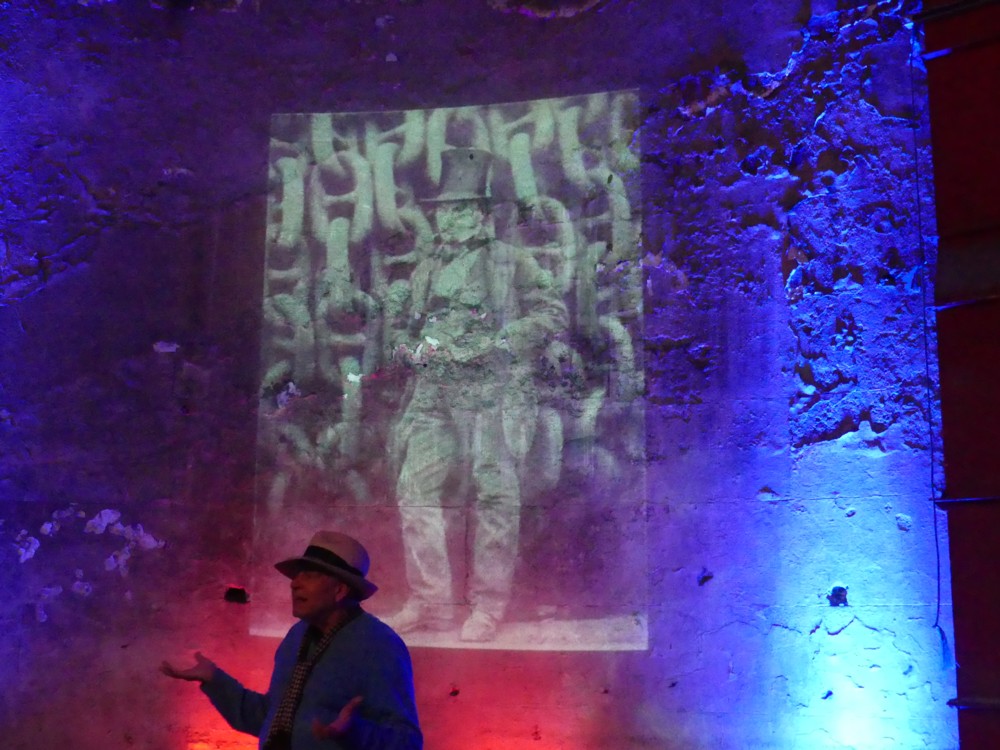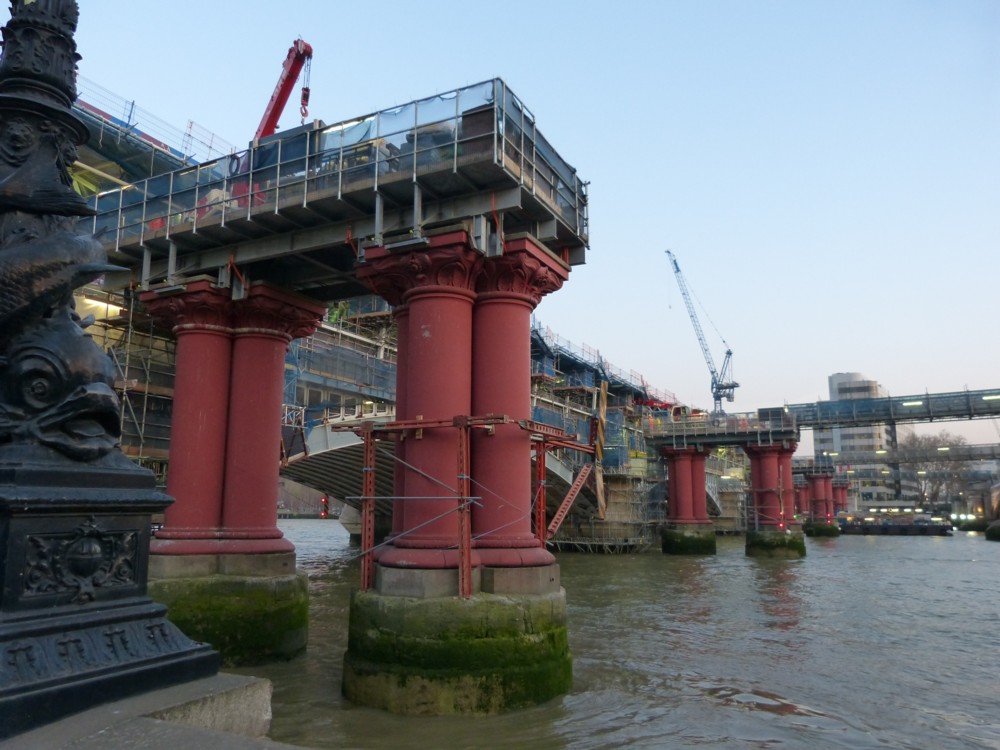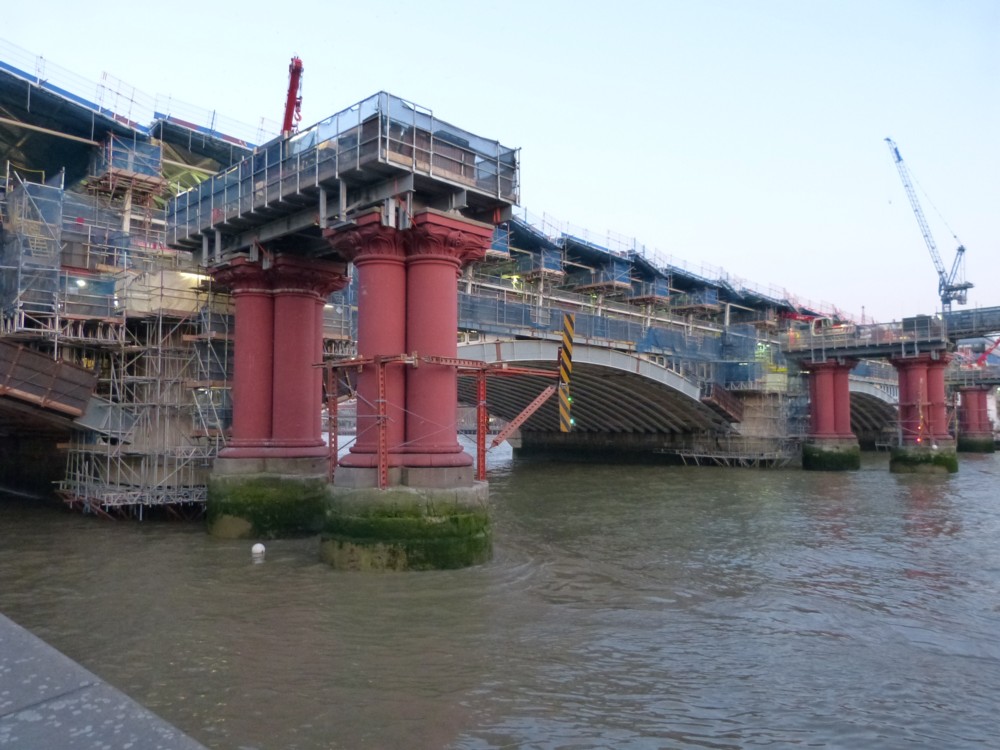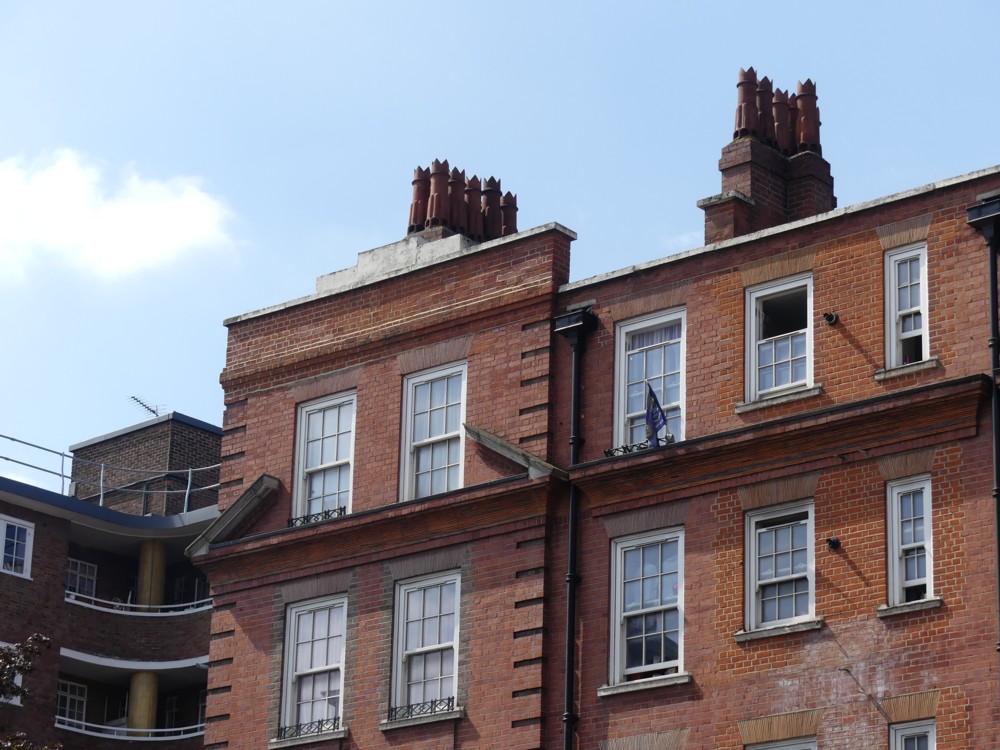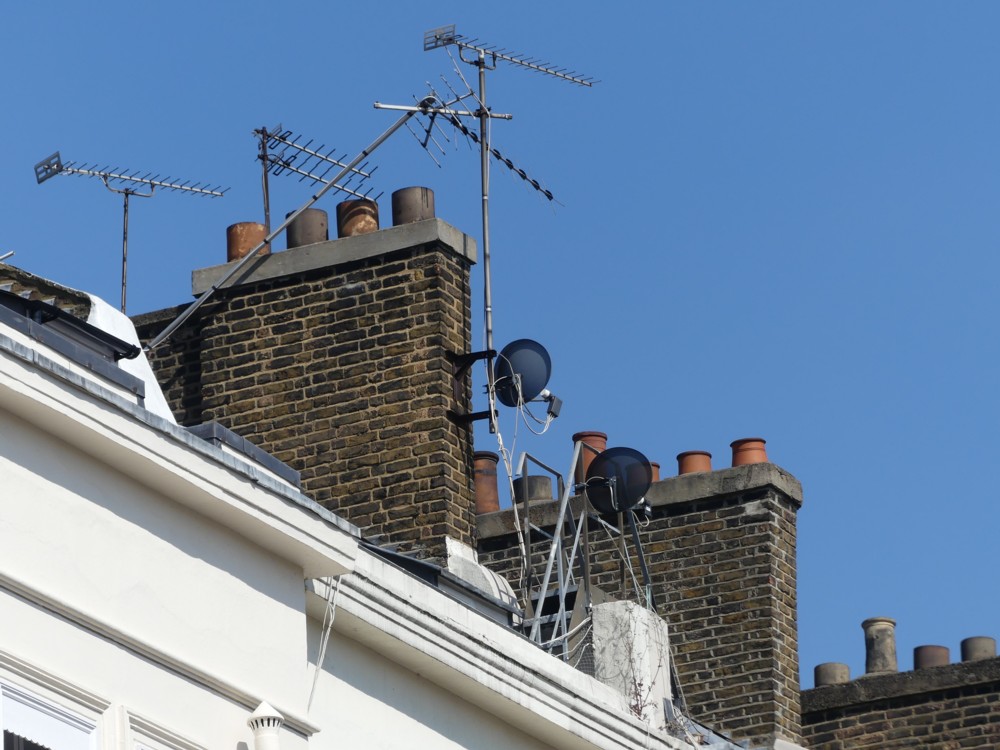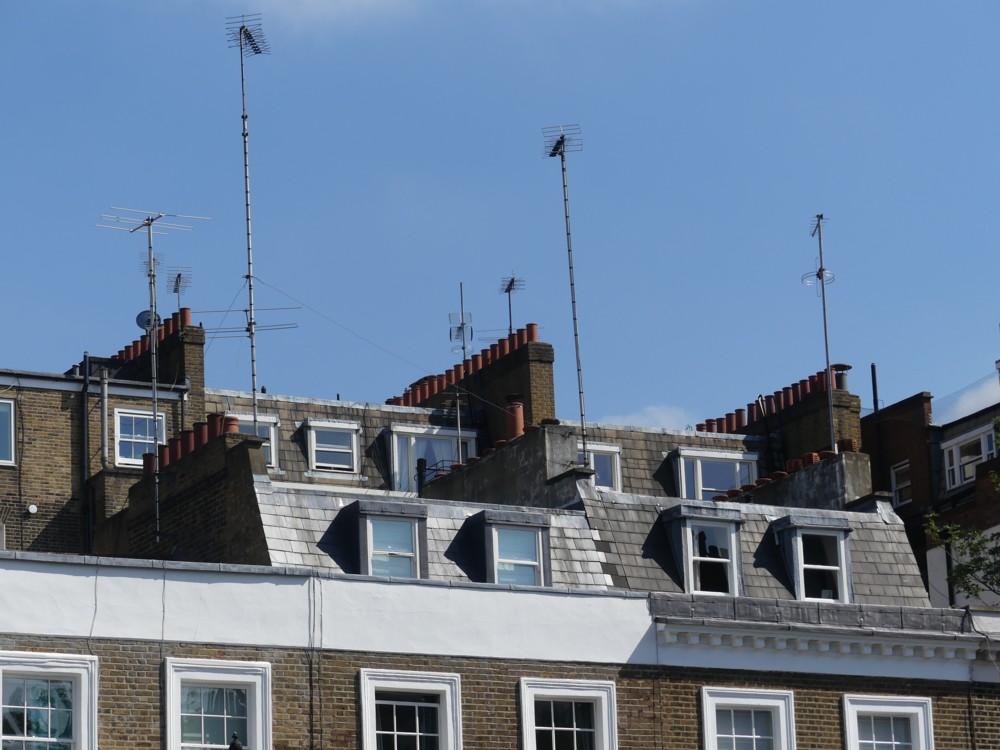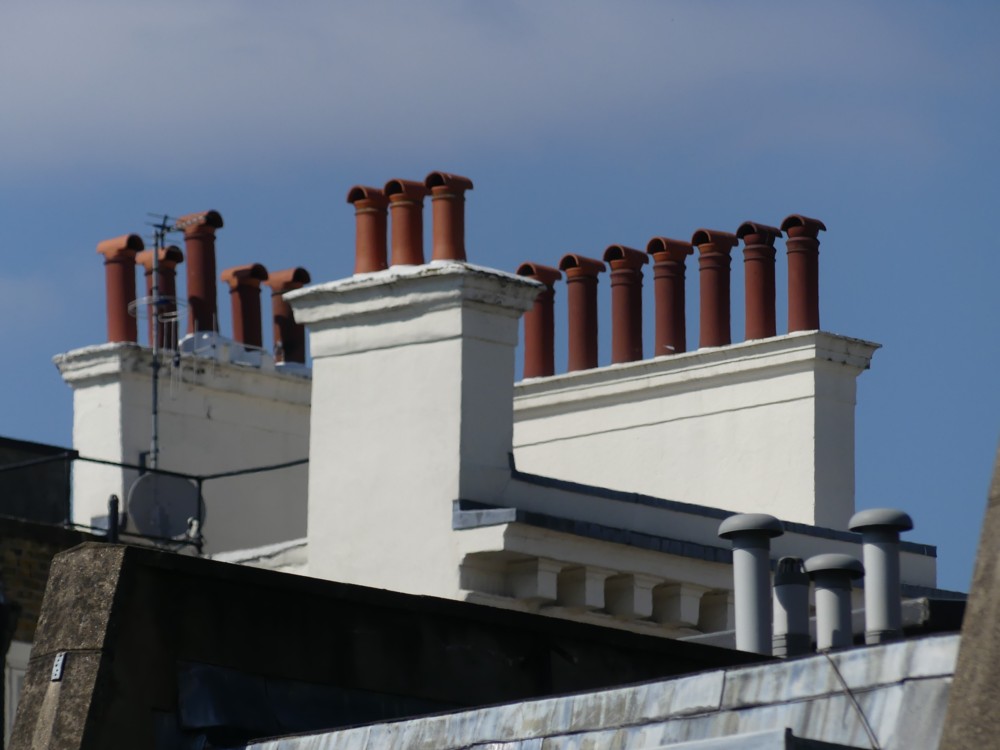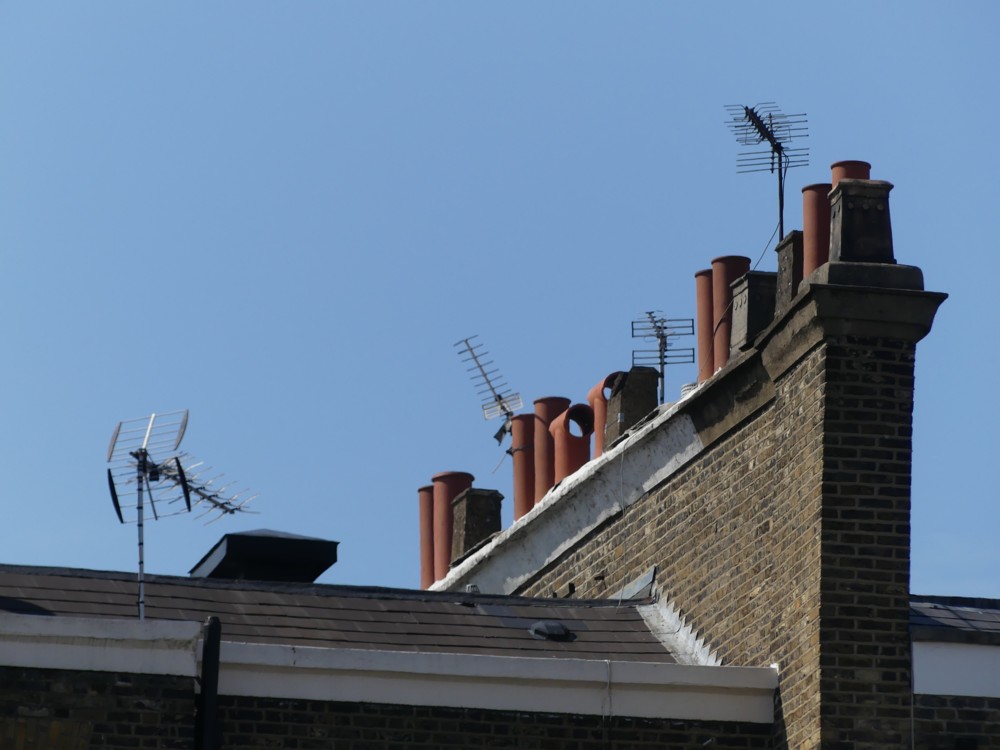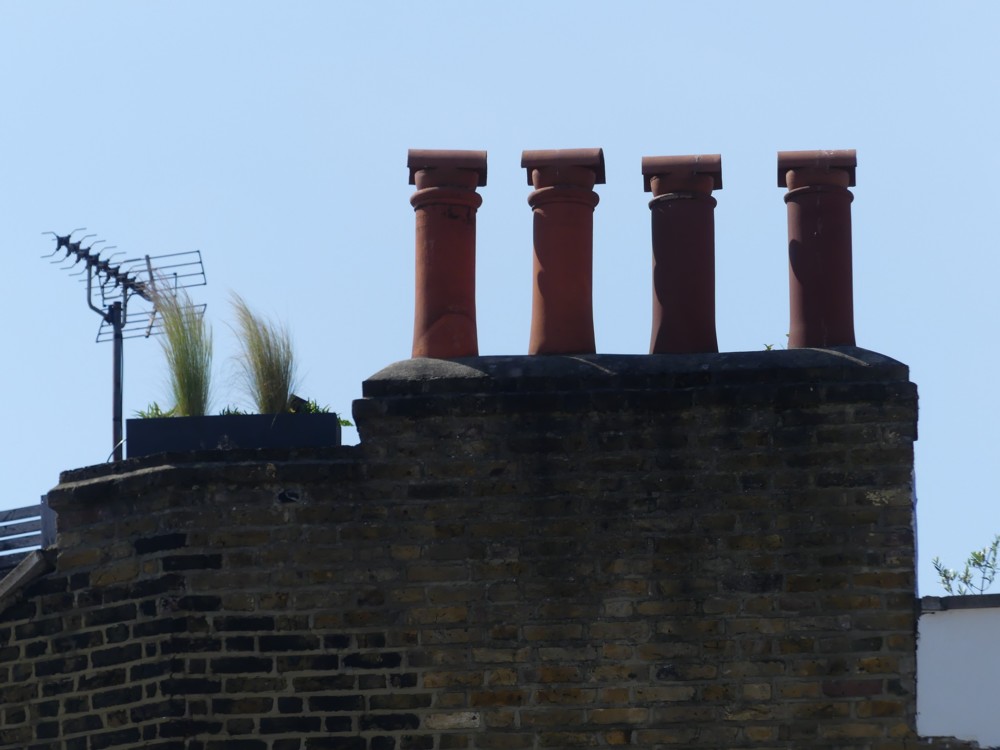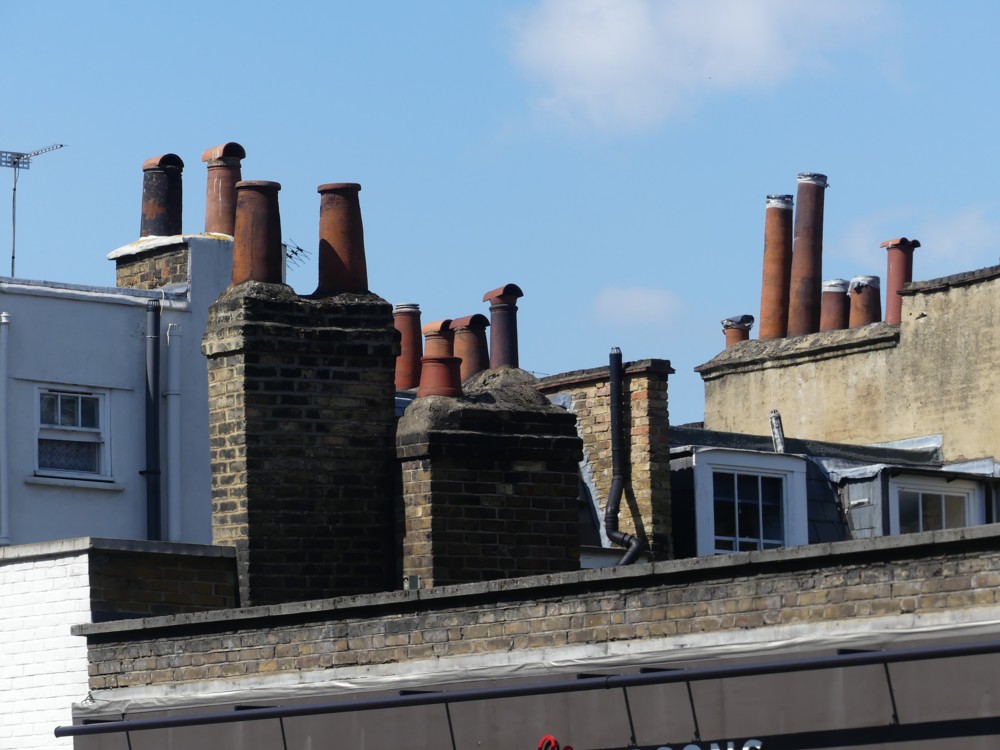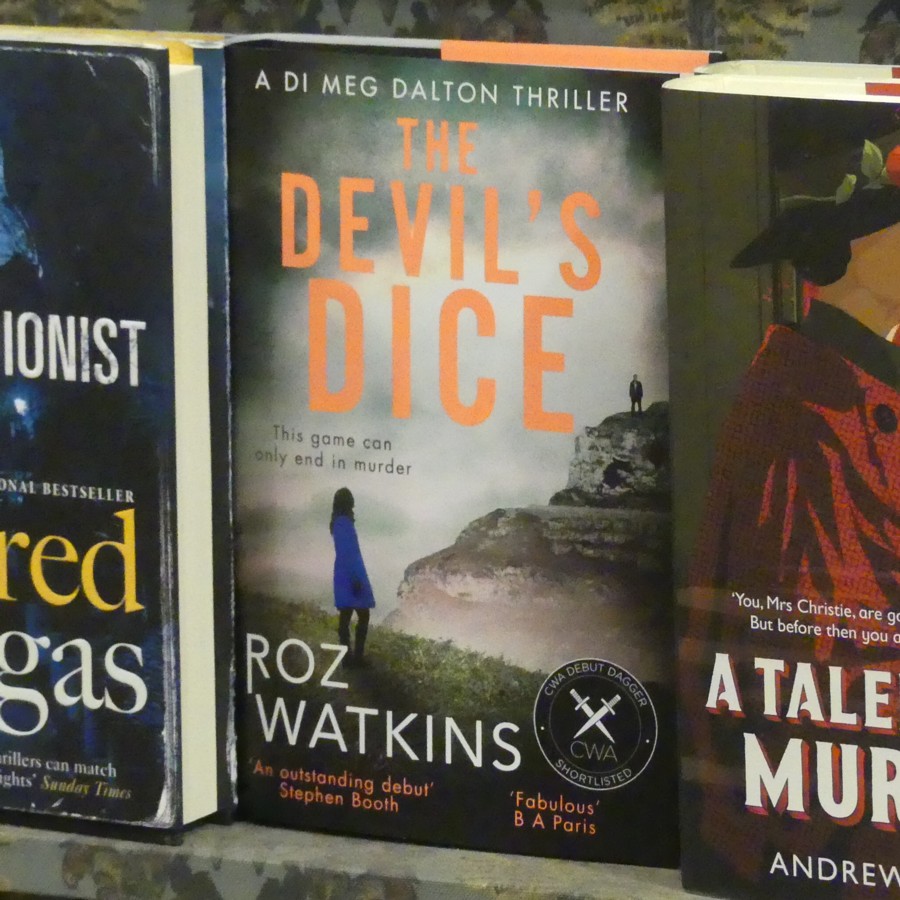And no, I don’t mean reinforcements for an army. I mean the kind of reinforcements that end up buried in concrete.
Like these ones:
All six of these photos also feature one of the more impressive scaffolding arrays near me just now. The art of scaffolding and the art of creating reinforcements for structural concrete have much in common. Both involve putting together lots of bits of metal. Both need to result in a structure that stays put and does not collapse. Both look pretty to people like me.
But there are also big differences. Scaffolding is very visible, and it remains visible for the duration of its working existence. Scaffolding thus proclaims itself to the world, by its very existence. That we live in a golden age of scaffolding is obvious to all of us, whether we like this fact or hate it.
Also, scaffolding rather quickly punishes those who erect it, if they don’t do it right. While creating scaffolding, scaffolders make use of the scaffolding they have just been constructing, and they are their own first users. They thus have a literally inbuilt incentive to do their work well. And if they don’t, it is not that hard for others to spot this. Bad scaffolding wobbles. Such are my surmises about scaffolding.
Reinforcements for concrete are something else again. By the time they go to work, doing the job they were built for, everyone concerned had better be damn sure that they have done their work well. But, if they haven’t, the disastrous consequences of that bad work may take years to happen, and even then to be controversial. Who is to say exactly what caused a building to collapse? And if the building collapses rather catastrophically, it is liable to destroy a lot of the evidence of what exactly happened, and why. Investigating such catastrophes being a whole separate job in itself. So, getting these reinforcements right, with an inbuilt regime of testing and inspection and supervision, all managed by morally upright people whose declarations of confidence in what they have been inspecting can be relied upon, is a whole distinct industry.
But, this is an industry whose products, by their nature, end up being invisible. We all rely on such work being done correctly, not just “structurally” but also in a morally correct manner. Yet, we mostly never see this work, only its indirect results.
So, I hereby I celebrate the work, morally as well as merely technically good, that goes into the making of reinforcements for concrete. I salute the good men and true who make these (I think) beautiful objects, and who ensure that they perform faithfully. Their moral as well as technical excellence is all part of why I consider such reinforcements to be things of beauty.
I did some googling to try to determine exactly what reinforcements like those in my photos are used for. The lorry says R. SWAIN AND SONS on it. But they are hauliers, not makers of concrete reinforcements. The nearest I got to an answer was this photo, of objects just like those on my lorry, with this verbiage attached: “Prefabricated Piling Cages Made of Reinforced Bars On Site”. Prefabricated Piling cages. Piling sounds to me like foundations. (Yes.) The reinforcing has to be shoved down a hole in one go. It can’t be constructed bit by bit, in the hole. It either gets assembled beforehand on site, or, it gets assembled in a factory and taken to the site by lorry, as above.
The reinforcing that a structure needs when it is above ground, on the other hand, can be assembled on site, and I’m guessing that this is what usually happens.
Just guessing, you understand. My first guess actually was: for an above ground structure, until I came upon the photo I just linked to, and not foundations. But, what do I know?

